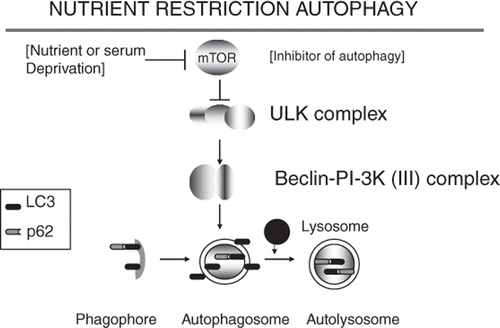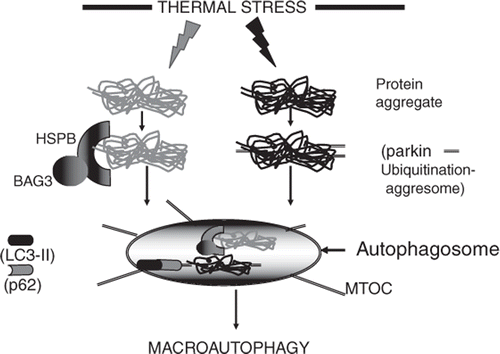Figures & data
Figure 1. Nutrient restriction autophagy is triggered when the kinase mTOR is inhibited. mTOR inhibition leads to relief of repression of the ULK kinase cascade and formation of a Beclin1/PI-3 K (III) complex that triggers assembly of the phagophore and autophagosome. LC3 is induced and activated to the LC3-II form by conjugation to phosphatidylethanolamine during autophagy. LC3-II stimulates the formation of autophagosome and can bind to the protein aggregate binding protein p62/SQSTM1. Protein aggregates conjugated to p62 and LC3-II are then degraded when the autophagosome becomes associated with lysosomes to form the autolysosome.

Figure 2. Triggering of the macroautophagy response by stress induced protein aggregates. At least two pathways may be involved in sensing the presence of aggregates and directing them to the autophagosome. In the grey pathway, aggregates are sensed/bound by HSPB/BAG3 complexes and directed to the autophagosome. In the black pathway, aggregates are recognised by the ubiquitin E3 ligase parkin that sees aggregated proteins, polyubiquitinates them and leads to the formation of the aggresome. Aggresomes are translocated to the autophagosome located at the microtubule organising centre (MTOC). The polyubiquitin chains on the aggresome are then recognised by p62 which interacts with LC3 and triggers autophagy. Responses to stresses such as hyperthermia may involve a combination of the two pathways.
